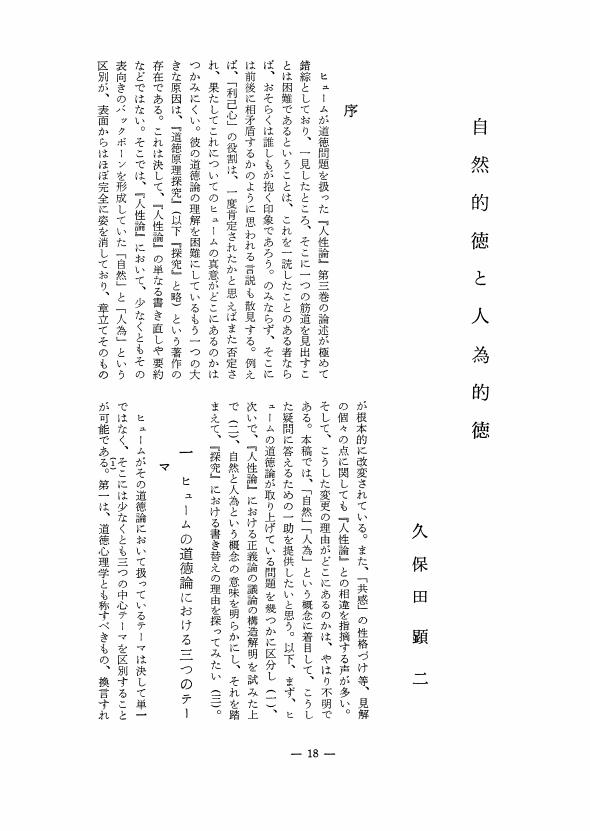3 0 0 0 OA 積極的安楽死と消極的安楽死(I) : 「殺すこと」と「死ぬに任せること」
- 著者
- 久保田 顕二
- 出版者
- 広島大学倫理学研究会
- 雑誌
- 倫理学研究 (ISSN:0916247X)
- 巻号頁・発行日
- vol.5, pp.17-33, 1992-06-30
1 0 0 0 OA 書評
1 0 0 0 OA 書評
1 0 0 0 IR 「権利」言説についての一考察
- 著者
- 久保田 顕二
- 出版者
- 小樽商科大学言語センター;Center for Language Studies, Otaru University of Commerce
- 雑誌
- 言語センター広報language studies (ISSN:09193006)
- 巻号頁・発行日
- no.26, pp.15-27, 2018-01
論文・研究ノート
1 0 0 0 OA 自然的徳と人為的徳
- 著者
- 久保田 顕二
- 出版者
- 日本イギリス哲学会
- 雑誌
- イギリス哲学研究 (ISSN:03877450)
- 巻号頁・発行日
- vol.15, pp.18-30, 1992-04-01 (Released:2018-05-25)
- 参考文献数
- 2
1 0 0 0 書評
1 0 0 0 OA 世界における終末期の意思決定に関する原理・法・文献の批判的研究とガイドライン作成
- 著者
- 盛永 審一郎 加藤 尚武 秋葉 悦子 浅見 昇吾 甲斐 克則 香川 知晶 忽那 敬三 久保田 顕二 蔵田 伸雄 小出 泰士 児玉 聡 小林 真紀 品川 哲彦 本田 まり 松田 純 飯田 亘之 水野 俊誠
- 出版者
- 富山大学
- 雑誌
- 基盤研究(B)
- 巻号頁・発行日
- 2011-11-18
終末期の意思決定に関する法制度・ガイドライン等を批判的に検討した結果、以下のことが明らかとなった。①医師ー患者関係に信頼性があり、透明性が担保されていれば、すべり坂の仮説はおこらないこと、②緩和ケアと安楽死は、相互に排他的なものではなくて、よき生の終結ケアの不可欠の要素であること、③それにもかかわらず、「すべり坂の仮説」を完全に払拭しえないのは、通常の医療である治療の差し控えや中止、緩和医療を施行するとき、患者の同意を医師が必ずしもとらないことにあること。したがって、通常の治療を含むすべての終末期ケアを透明にする仕組みの構築こそが『死の質の良さを』を保証する最上の道であると、我々は結論した。
1 0 0 0 OA 積極的安楽死と消極的安楽死(II) : 「殺すこと」と「死ぬに任せること」
- 著者
- 久保田 顕二
- 出版者
- 埼玉工業大学
- 雑誌
- Contexture : 教養紀要 (ISSN:09101233)
- 巻号頁・発行日
- vol.11, pp.23-45, 1993
This paper examines three main objections raised against James Rachels' claim that the distinction between killing and letting die has no moral significance. The first objection, which is based upon a rule-utilitarian position, holds that the current moral rules forbidding active killing have the highest “utility value" in the structure of our present moral code and therefore should not be abandoned. The second objection focuses on the interpretation of the AMA statement which Rachels attacks in his argument, and says that he misunderstands the statement because it does not concern itself with the distinction as he supposes. The third objection, which Philippa Foot makes, appeals to the concept of virtue. According to the objection, the killing / letting-die distinction is morally relevant because an unjustified act of killing is contrary to “justice" whereas an unjustified act of letting die is contrary to “charity".


